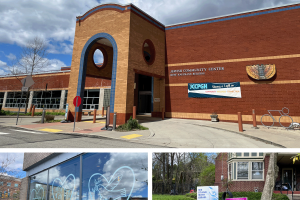You got to admit: The idea of having a robotic limb is pretty cool. Think Luke Skywalker’s arm in Star Wars, or Lee Majors in The Six Million Dollar Man. It’s a comforting thought that if we were to ever lose an arm, leg, or even our whole body, we’d just be able to swap it with a bionic replacement—one that might even improve on the original.
While you might think that robotic body parts exist exclusively in the realm of science fiction, the truth is that scientists and engineers have been designing and building robotic prosthetics for decades. These devices are even so sophisticated that they can even allow its wearers to “feel” certain sensations.
For obvious reasons, though, much of the research focus around robotic limbs has been about prosthetics for amputees and other folks who have lost their limbs. These devices have helped give mobility, motor function, and sensory ability back to these people—which is undoubtedly a wonderful thing. However, there’s a growing contingent of researchers who want to democratize robo-limbs and give them to folks even if they have their appendages intact.
Silvestro Micera, a neuroengineer at the Swiss Federal Institute of Technology Lausanne, is one such scientist. Much of his research has been dedicated to creating bionic limbs for amputees. In fact, he was one of the pioneers in the development of robotic limbs with sensory feedback—having created a bionic arm that allowed an amputee to “feel” what it touched using electrodes implanted into the patient’s major nerves in 2013.
Silvestro Micera, a neuroengineer at the Swiss Federal Institute of Technology Lausanne, is one such scientist pioneered the development of robotic limbs that allowed an amputee to “feel” what they touched.
2014 Lifehand 2 / Patrizia Tocci
Now, Micera plans to present his research to give a robotic “third arm” to individuals with both arms at the American Association for the Advancement of Science (AAAS) conference on Friday. “The idea is to see whether we can allow people to control more than the two natural arms,” Micera said in a statement.
It’s the kind of cyberpunk augmentation you’d expect to see in a movie like Blade Runner or Star Wars. But Micera believes it could give people wearable robotics that could help them in their day-to-day lives. Think about the times when you literally had your hands full and you needed to do things like pick up objects or open a door. A third arm could assist with all those actions and more.
Interestingly, Micera suggests going beyond just a third arm—and giving people the chance to wield even more robotic limbs. That’s right: this might result in a kind of wearable, robotic octopus suit a la Doc Ock in Spider-Man. Like the comic book villain, the limbs would allow for even more mobility, versatility, and motor function.
For now, though, much of this research is still in the conceptual stage. More focus is being paid to creating bionic prosthetic limbs for amputees—which is certainly where research priorities should be. But the cyberpunk reality of augmented bionic limbs for all is just around the corner. Hopefully, it won’t cost us an arm and a leg to get it.






